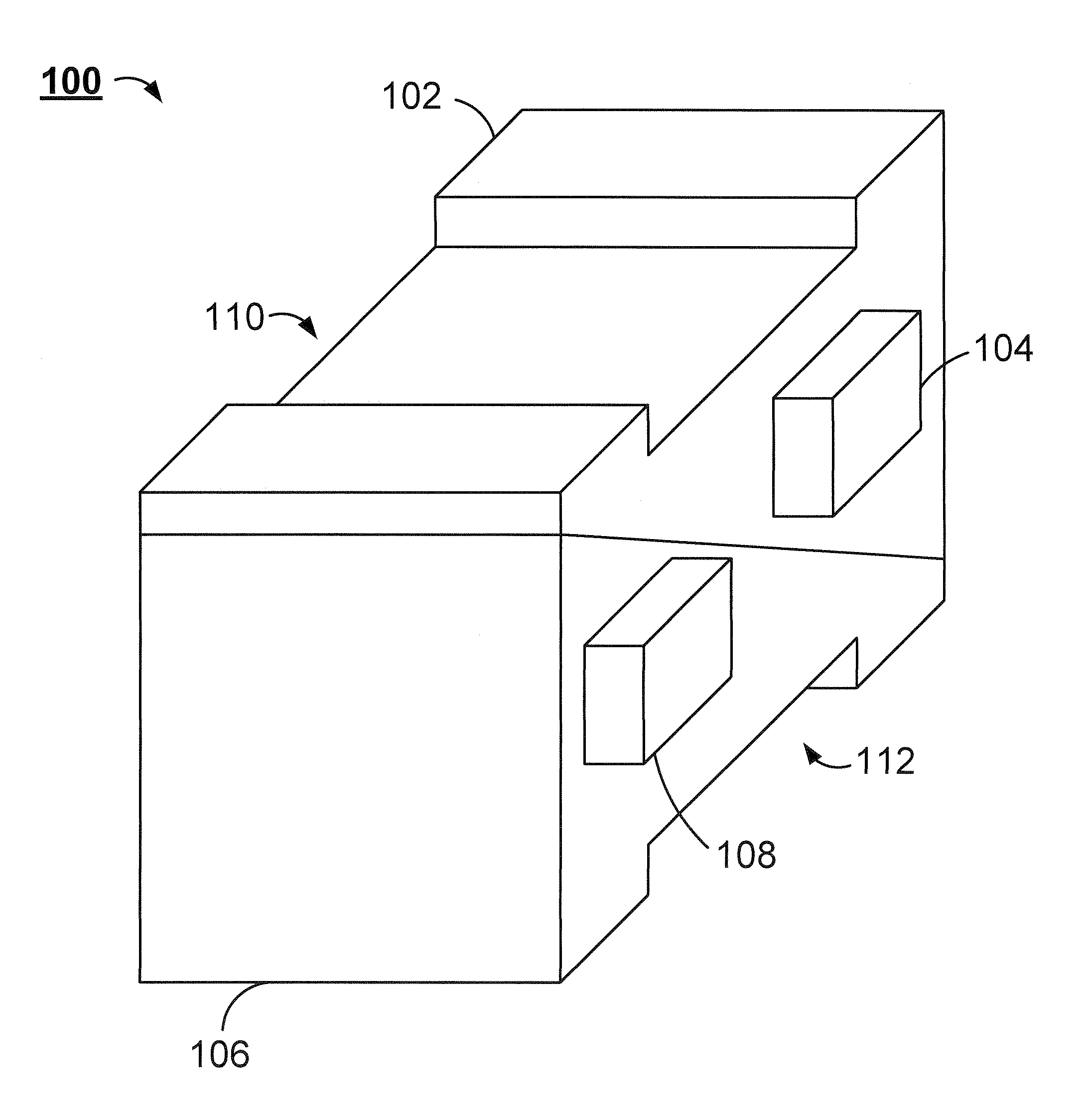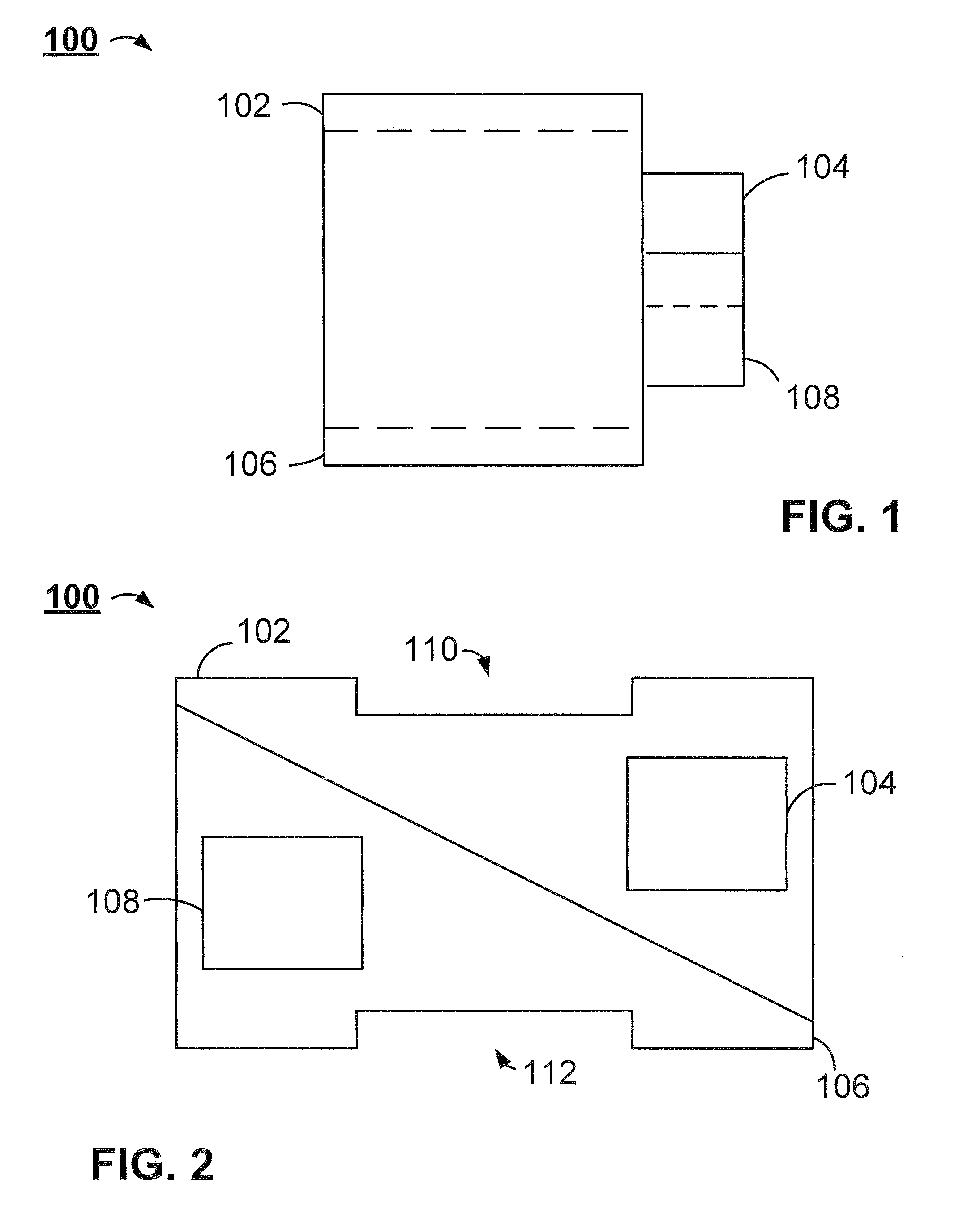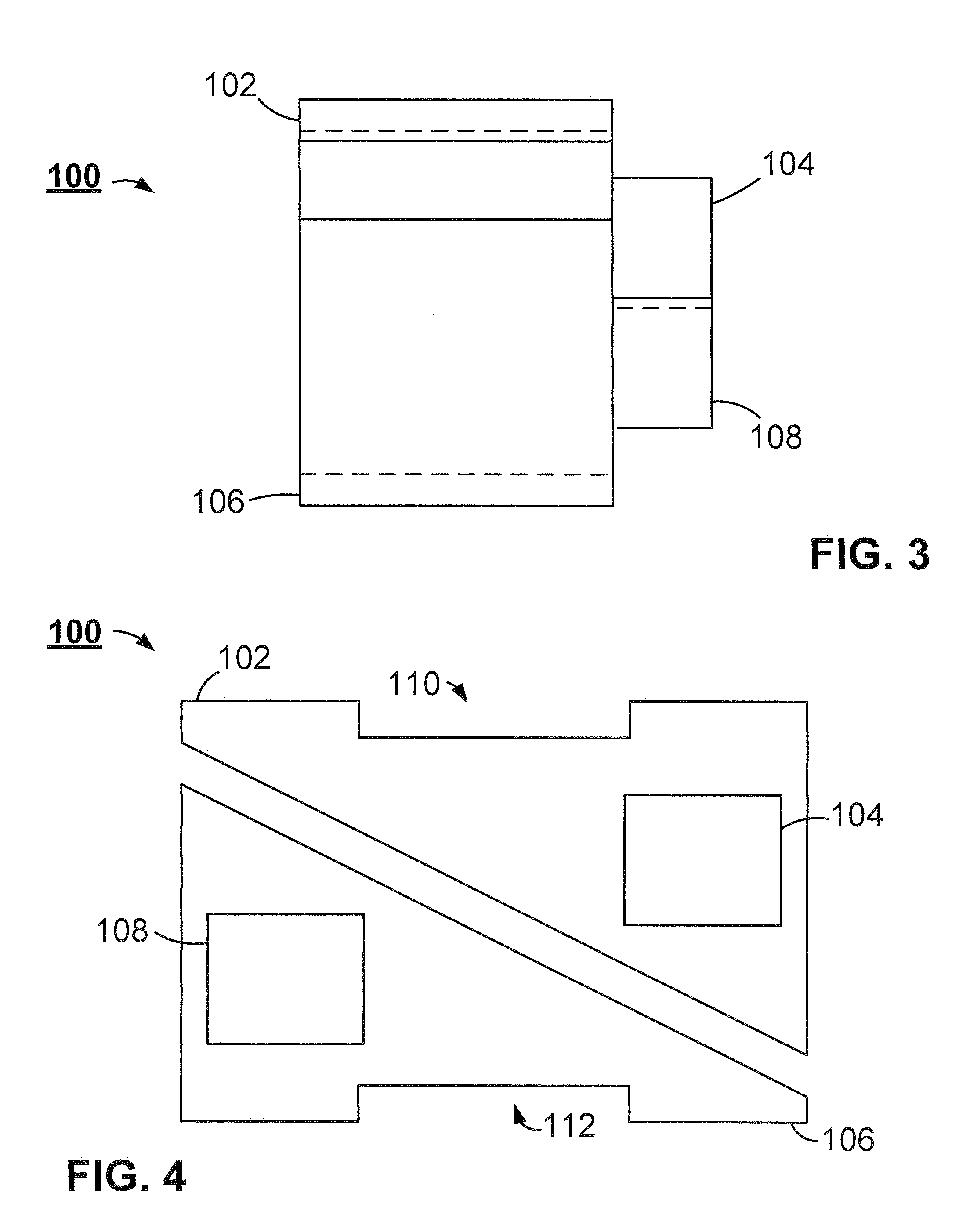Orthodontic appliance
- Summary
- Abstract
- Description
- Claims
- Application Information
AI Technical Summary
Benefits of technology
Problems solved by technology
Method used
Image
Examples
Embodiment Construction
[0018]Preferred embodiments of the present invention are generally directed to a dental appliance configured to provide treatment of mandibular disharmonies, such as Class II malocclusions and rearward divergent mandibles.
[0019]FIG. 1 shows a front view of the orthodontic appliance 100 (also referred to herein as dental appliance 100) in a preferred embodiment. The dental appliance 100 preferably includes a first member 102 with a main body portion to which a first extraction feature 104 laterally extends. A second member 106 is preferably shown in close proximity to the first member 102. In a preferred embodiment, the second member 106 has a main body portion to which a laterally extending second extraction feature 108.
[0020]FIG. 2 displays a side view of the dental appliance 100 in a preferred embodiment. The dental appliance 100 includes a first member 102 and a second member 106 in close proximity. Preferably, the first and second members 102 and 106 can be a variety of sizes to...
PUM
 Login to View More
Login to View More Abstract
Description
Claims
Application Information
 Login to View More
Login to View More - R&D Engineer
- R&D Manager
- IP Professional
- Industry Leading Data Capabilities
- Powerful AI technology
- Patent DNA Extraction
Browse by: Latest US Patents, China's latest patents, Technical Efficacy Thesaurus, Application Domain, Technology Topic, Popular Technical Reports.
© 2024 PatSnap. All rights reserved.Legal|Privacy policy|Modern Slavery Act Transparency Statement|Sitemap|About US| Contact US: help@patsnap.com










